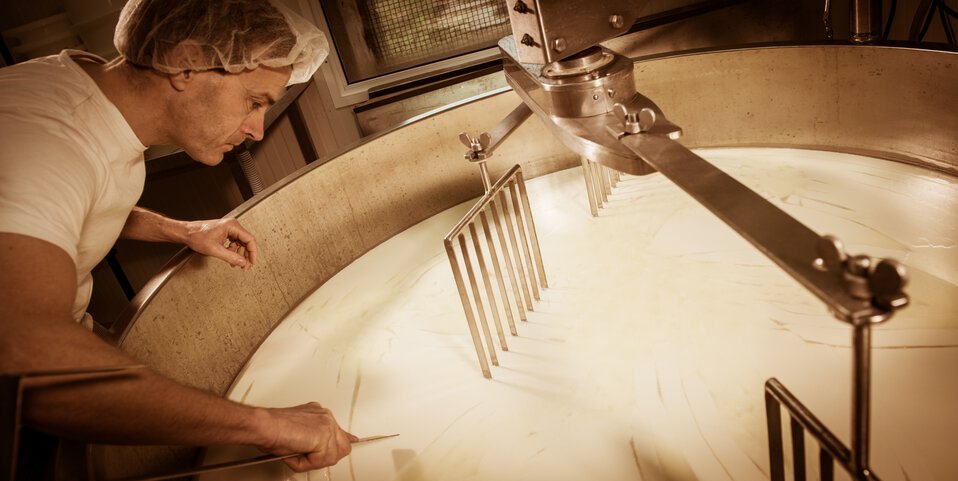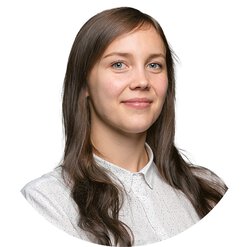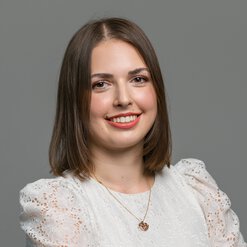

Measurement of pH, temperature and conductivity in cheese production
The pH value plays a key role at various stages of cheese production, including at the initial acidification of the milk to ensure that fermentation is proceeding properly, after the whey is cut and strained it indicates the degree of acidity development and correlates with the calcium content, during milling and salting it determines the hardness and the amount of salt absorbed by the cheese, and at the ripening stage the pH can affect the final taste and texture of the final product. Temperature is equally important - during pasteurization, for example, its strict control is crucial to the destruction of harmful microorganisms, when adding bacterial cultures its optimal level is necessary to ensure the proper growth and activity of these cultures, which affects the acidity and flavor of the cheese, and during whey centrifugation its control helps to achieve the desired texture of the cheese and separate the right amount of moisture. In this blog post, we will discuss the key stages of cheese production and also the measurement technology dedicated to them. Among other things, we'll look at the importance of controlling pH and temperature in the cheese bath, suggest devices for measuring conductivity in the salt bath, and share the know how on how to control temperature and humidity during cheese storage. Read on to learn how to optimize your processes!
Cheese Production – Key Stages
Cheese production is a complex process, where success depends on precise control of various parameters at each stage. Here's a simplified overview of the key steps in cheese production, taking into account differences between various types.
Milk Preparation:
- Thermization: If the milk is not processed immediately after delivery, it is thermized to slow down bacterial growth and allow for longer storage.
- Standardization: Depending on the type of cheese, the milk may be standardized to adjust the fat and protein content to desired levels.
- Pasteurization: The milk is pasteurized to kill unwanted microorganisms and ensure food safety.
- Homogenization: For some types of cheese, such as semi-soft sliced cheese, the milk may be partially homogenized to alter the fat structure and ensure uniformity.
Additional Ingredients:
- Appropriate bacterial cultures and rennet are added to initiate the fermentation and milk coagulation processes.
Coagulation and Whey Draining:
- The coagulated milk transforms into curd, which is then cut with a cheese harp to facilitate the separation of whey from the curd mass.
Shaping and Pressing:
- Removing the whey allows for the formation of the curd mass, which is then pressed to give the cheese its final shape and remove excess fluids.
Salting:
- The cheese is salted, affecting its flavor, preservation, and texture. Parameters such as temperature, conductivity, and pH of the cheese are regulated to ensure the right conditions for this process.
Aging:
- Cheese matures under controlled conditions of temperature and humidity, which influence the development of flavor, texture, and aroma. Some cheeses, like cottage cheese or cream cheese, skip this stage.
Throughout the process, constant measurements and adjustments of temperature, pressure, and other parameters are essential, using controllers and recorders to comply with technological and quality regulations. These devices ensure that every stage—from milk storage, through pasteurization, to cheese aging—is precisely controlled, which is crucial for the production of high-quality cheese.
In this blog post, we will only discuss the production processes characteristic of cheese, which were not covered in the article: "From Separation to Filling: Pressure Measurement in the Dairy Industry.

The simplified cheese-making process shown here is used as an example for all common cheese varieties (whether hard cheese, sliced cheese, soft cheese, cream cheese, hollandaise or cottage cheese).
Controlling temperature and pH in the cheese bath
In cheese production and quality control, pH and temperature determine the success of the final product. Optimal temperature is the foundation for efficient fermentation and curd formation, while precisely measured and controlled pH levels determine the texture, structure and final flavor profile of the cheese.
Stirring time must be adjusted to the desired acidity level. The longer the solution is stirred, the higher the acidity will be. Stirring time can vary depending on the grade of cheese and the production method. For example, in the case of cheddar cheese, the stirring time can take from 30 minutes to 2 hours, while in the case of mozzarella cheese it is only a few minutes. JUMO tecLine HD pH electrodes are the ideal solution for pH control in a cheese bath. These electrodes are characterized by remarkable robustness, stable and reliable measurement values and extended service life.
The temperature of the cheese mixture also has a significant effect on the acidity of the cheese. Too low a temperature can slow down the fermentation process, while too high a temperature can speed it up, which can lead to cheese with undesirable characteristics. The temperature/time graph illustrates how the temperature of the cheese mixture changes throughout the process. The shape of the graph depends on the heating method and cheese variety.
The use of a hygienic temperature sensor and compact controller of the JUMO dTRON series enables precise control of temperature and mixing time in real time. This allows the mixing process to be optimized, leading to cheese with the desired properties, such as the right acidity, taste, texture and appearance. In addition, the JUMO dTRON system saves energy by reducing heating and mixing times.

The temperature and pH value of the cheese are key parameters that are controlled in the cheese tub
Monitoring salt concentration in salt bath solution using conductivity sensor
The cheese salting process is an important production step that affects taste, texture, shelf life and microflora development. In the cheese salting process, which appears to be a simple task, lies the essence of quality cheese. Measurements of conductivity, pH and temperature become key criteria that directly affect the quality and characteristics of the final product. Using inductive conductivity transducers such as the CTI-750 allows us to accurately determine the concentration of brine, which is essential for achieving the ideal balance of flavor and preservative properties of salt. Meanwhile, constant pH monitoring with systems such as AQUIS 500 pH value transmitters and JUMO tecLine pH conductivity electrodes ensures that the fermentation process is properly inhibited and the cheese acquires the desired flavor profile and texture. In addition, maintaining the optimal temperature during salting, controlled by resistance thermometers and their compact controllers, ensures the uniformity of the process, protecting against the growth of unwanted microorganisms and ensuring adequate salt absorption.

Measurement of salt concentration in a salt bath using conductivity with a JUMO CTI-750 transmitter
Measuring temperature and humidity during cheese ripening
Adequate temperature and humidity are two basic parameters that must be constantly observed and regulated to ensure optimal conditions for cheese ripening and storage. To do this, our customers use state-of-the-art systems such as resistance thermometers and advanced dTRON controllers, which not only closely track every temperature fluctuation, but also automatically adjust conditions to the ideal range. Data loggers, such as the JUMO LOGOSCREEN 700, collect all the key information, enabling us to create comprehensive reports on the ripening history of each batch.

Important measurement variables during the maturation stage that need to be continuously monitored are temperature, relative humidity and time.

The LOGOSCREEN 700 electronic recorder allows, among other things/ to create comprehensive reports on the maturation history of each batch.

Technical specialist
Katarzyna Tracz - Inside Sales Engineer +48 71 339 32 86 Katarzyna.Tracz@JUMO.net +48 71 339 32 86Comments
We encourage you to leave your comments via the form below. They will be posted online after they have been approved through our review process.


